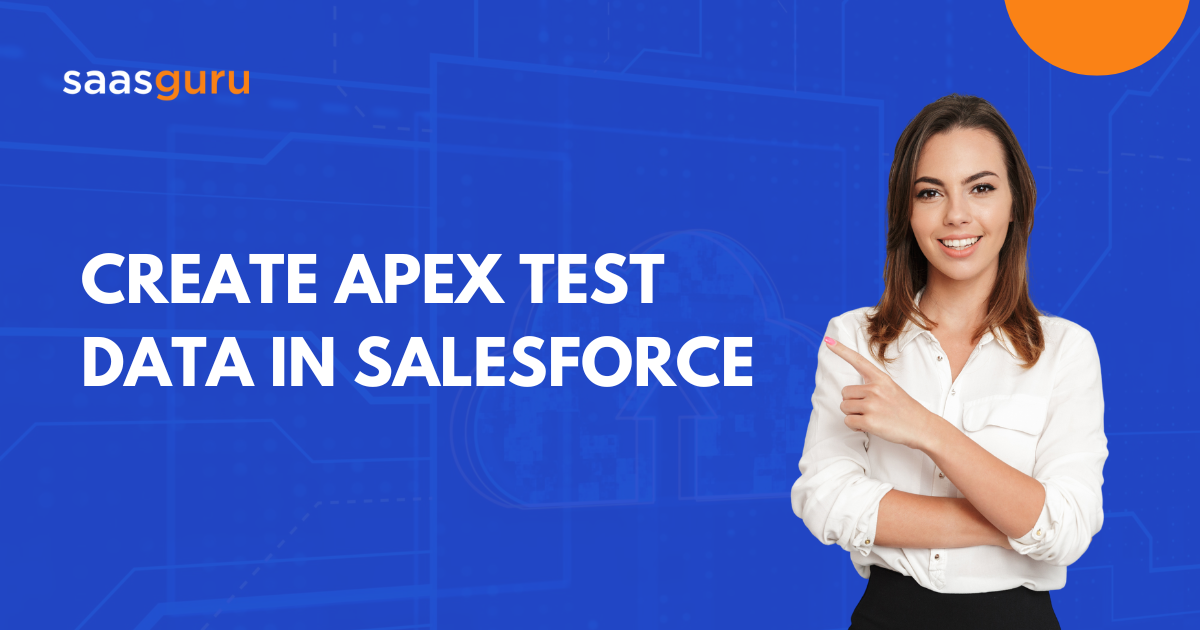Did you know that 82% of Tavant Salesforce hires attribute their success to nailing the interview’s unique blend of technical mastery and cultural path to an impactful impression?
The interview might seem like a tough climb, but we’ve got your back! This guide is like a friendly companion; It shares insider tips to help you shine in the interview. You’ll learn how to handle real-world challenges like a pro, understand tricky technical stuff, and showcase your teamwork skills – all the things that make Tavant excited. Ready to leave a lasting impression and secure the job you’ve been dreaming of?
Let’s dive in and make it happen!
Technical & Coding Related Questions & Answers
Q1. Could you elaborate on the distinctions between a custom object and a standard object within the Salesforce framework?
In my Salesforce journey, custom objects have been instrumental in tailoring the data structure to the unique needs of the business processes. They allow for the creation of entities like Projects or Events, ensuring that the data model aligns precisely with our operational requirements. On the flip side, standard objects such as Account or Contact serve as foundational building blocks designed by Salesforce to address common business functionalities. This balance between customization and standardization empowers me to optimize our Salesforce instance for maximum efficiency.
Q2. What is your approach to managing governor limits in Salesforce?
Navigating Salesforce governor limits is a critical aspect of my development approach. To ensure optimal performance, I meticulously craft SOQL queries, employing best practices to minimize resource consumption. Leveraging bulk processing methods allows me to efficiently handle large datasets, and I am vigilant in adhering to coding practices that align with the platform’s limits. This ensures that our applications not only meet business requirements but also operate seamlessly within the constraints set by Salesforce.
Q3. Describe the order of execution for a Salesforce record save.
In the process of saving records in Salesforce, I follow a well-defined sequence to guarantee data integrity and maintain consistency. Before triggers initiate custom logic, validation rules enforce data quality, and after triggers, along with workflow and process rules, contribute to a comprehensive post-save orchestration. This meticulous order of execution ensures a systematic and reliable record-saving process, aligning with our business rules and requirements.
Q4. What is the purpose of a Salesforce sandbox, and how many types are there?
Salesforce sandboxes are indispensable in my development workflow, providing dedicated spaces for experimentation and testing. Developer and Developer Pro sandboxes cater to individual developers, offering a controlled environment for iterative development. On the other hand, Partial and Full sandboxes provide a more comprehensive replication of the production environment, facilitating thorough testing with larger datasets. This diversity of sandbox types allows me to tailor my testing approach based on the specific needs of each development phase.
Q5. Can you clarify the distinction between a role and a profile in Salesforce?
As I navigate user and data management within Salesforce, profiles, and roles play distinct yet interconnected roles. Profiles, in my experience, act as gatekeepers, determining object and field-level permissions that define what actions users, including myself, can perform. Roles, on the other hand, establish a hierarchical structure that regulates record-level access. This dynamic interplay between profiles and roles ensures a nuanced and secure data access model within our organization.
Q6. Can you explain how to use Apex to create a dynamic SOQL query that adapts to varying search criteria in Salesforce?
Absolutely. In Apex, dynamic SOQL is essential for building flexible queries that adapt to different user inputs or conditions. To create a dynamic SOQL query, I use a string to construct the query based on the specific requirements. For instance:
String query = ‘SELECT Name, Id FROM Account’;
if (someCondition) {
query += ‘ WHERE SomeField = :someValue’;
}
List<Account> accounts = Database.query(query);
In this example, the base query is modified conditionally. This approach allows the query to be versatile and responsive to varying search criteria, enhancing the application’s functionality and user experience.
Q7. How does Salesforce handle security at the application level?
Security is paramount in my Salesforce implementations, and I employ a multi-faceted approach to ensure application-level security. The role hierarchy establishes a clear structure for data visibility, while profiles dictate object and field-level permissions. Permission sets extend these permissions dynamically, offering flexibility in user access. Sharing rules further enhances record-level access, creating a robust security framework that aligns with our organizational needs.
Q8. What are the benefits of using Salesforce Lightning over Classic?
Salesforce Lightning stands as a transformative force in our user experience. The contemporary user interface elevates the user experience, delivering a visually engaging and user-friendly interface. Beyond aesthetics, the improved performance ensures quick and responsive user interactions. The advanced customization capabilities, including Lightning Components and the App Builder, empower me to tailor our Salesforce instance to our unique business processes. This combination of aesthetics, performance, and customization has significantly elevated the overall user satisfaction within our organization.
Q9. Explain the differences between a trigger and a workflow rule in Salesforce.
In my coding decisions within Salesforce, I carefully weigh the use of Apex triggers and declarative tools like workflow rules. Apex triggers, coded in the powerful Apex language, have become my choice when handling complex logic and intricate business processes that demand customization. On the other hand, workflow rules serve as a user-friendly, declarative means to automate standard processes. This strategic selection allows me to balance customization and ease of implementation, optimizing our development approach for efficiency and maintainability.
Q10. How would you optimize a Visualforce page for better performance?
Optimizing Visualforce pages is a cornerstone of my development strategy. I prioritize minimizing SOQL queries to reduce database loads and implement pagination strategies for handling large datasets efficiently. Leveraging JavaScript remoting facilitates seamless asynchronous processing, enhancing overall page performance. By adhering to these optimization practices, I ensure that our Visualforce pages not only meet user expectations for responsiveness but also contribute to a positive overall user experience.
Also Read – Accenture Salesforce Developer Interview Questions & Answers
Scenario-Based Assessments
Q11. A client wants to implement a lead qualification process. How would you design this using Salesforce?
Designing an automated lead qualification process requires a thoughtful integration of Salesforce automation tools. Lead assignment rules streamline the distribution of leads, validation rules ensure data integrity, and workflows automate standard processes. For more intricate scenarios, I turn to processes or Apex triggers, allowing me to implement custom logic that precisely aligns with our unique lead qualification criteria. This comprehensive approach ensures a streamlined and automated lead management process, enhancing our overall efficiency in handling potential business opportunities.
Q12. The CEO wants a dashboard showing real-time sales performance. How would you implement this in Salesforce?
In meeting the CEO’s request for a real-time sales performance dashboard involves leveraging Salesforce’s reporting capabilities to the fullest. I create dynamic reports capturing key metrics and assemble them into a dashboard featuring charts and tables. To ensure real-time insights, I configure the dashboard to refresh at regular intervals, providing the CEO with accurate and up-to-date information on our sales performance. This not only meets the immediate need for real-time visibility but also showcases the power of Salesforce as a data-driven decision-making tool within our organization.
Q13. What is your strategy for managing data migration from a legacy system to Salesforce?
In my strategy, the migration of data from a legacy system to Salesforce is a methodical and phased process. I begin with a comprehensive assessment of the legacy data, creating a detailed data mapping document to guide the migration. Cleansing and standardizing data precedes the actual migration, ensuring data integrity. I carefully choose an appropriate migration tool, conduct thorough testing in a sandbox environment, and establish backup and rollback plans to mitigate any potential issues during the migration. This meticulous approach guarantees a seamless transition to Salesforce while safeguarding data accuracy and consistency.
Q14. A user is unable to access a record despite having the necessary permissions. How would you troubleshoot this issue?
Troubleshooting record access issues involves a systematic examination of various factors. I start by checking record ownership to ensure alignment with the user’s role and profile. Reviewing profile permissions, role hierarchy, and permission sets provides insights into the user’s access rights. I meticulously inspect sharing rules and field-level security settings to identify any restrictions. In cases of persistent issues, consulting the ‘View Setup Audit Trail’ helps trace recent changes that might have impacted record access. This methodical troubleshooting process allows me to pinpoint and resolve the root cause, ensuring seamless and secure record access within Salesforce.
Q15. In the scenario where the client seeks an automated process for generating related records based on specific criteria, how would you go about implementing this in Salesforce?
To address a client’s request for automating the creation of related records, I leverage Salesforce automation tools. Whether through Flow or Apex triggers, I meticulously define criteria and corresponding actions to ensure the systematic generation of new records based on predefined conditions. This approach not only streamlines our processes but also adds a layer of customization, aligning the automation precisely with the client’s specific requirements. The result is an efficient and tailored solution that enhances our overall workflow and meets the client’s automation objectives effectively.
Tips for a Successful Interview at Tavant:
- Know Your Narrative: Craft your professional journey into a compelling story. Share experiences that shaped your skills, aligning them with Tavant’s ethos. Make your resume a narrative that reflects your passion for growth.
- Tune into Tavant’s Tune: Immerse yourself in Tavant’s culture. Understand their values, projects, and innovations. Tailor your responses to showcase how you resonate with Tavant’s mission, making it evident that you’re not just seeking a job but a partnership.
- Tech Talk with Confidence: Highlight not just your technical prowess but your journey of growth. Share challenges you’ve conquered and how they’ve fueled your evolution. Demonstrate how your tech skills align seamlessly with Tavant’s vision.
- Collaboration Chronicles: Emphasize your collaborative spirit. Describe instances of effective collaboration and your contributions to cultivating a positive workplace atmosphere. Showcase how your collaborative mindset aligns with Tavant’s emphasis on synergy.
- Problem-Solving Showdown: Discuss not just problems solved but problem-solving journeys. Narrate instances where your innovative thinking made an impact. Demonstrate to Tavant that you don’t simply confront challenges; you view them as chances for personal and professional development.
- Passion Personified: Let your passion shine. Share moments where your love for your work translated into exceptional results. Make Tavant see not just your skills but the fire that fuels your dedication.
- Cultural Connector: Showcase how your values align with Tavant’s culture. Share personal principles that resonate with the company’s ethos. Emphasize that you are not just a candidate but a seamless cultural match for the organization.
Wrapping Up
As we conclude this guide on preparing for Tavant Salesforce interviews, it’s clear that success stems from thorough preparation, a keen understanding of the company, and the ability to showcase your skills. Interviews, despite their challenges, serve as occasions for personal and professional development when approached with the appropriate tools and mindset.
For added readiness, especially in roles like Salesforce Developer at Tavant, consider exploring saasguru’s Salesforce Labs. This platform offers practical learning experiences through tailored mini-projects for both Admin and Developer roles. The systematic approach and real-time validation eliminate uncertainty, allowing you to build skills at your own pace.
Approach each interview as a learning opportunity, recognizing that each step brings you closer to your career goals. As you embark on your Tavant Salesforce journey, may it mark the beginning of a new chapter.











